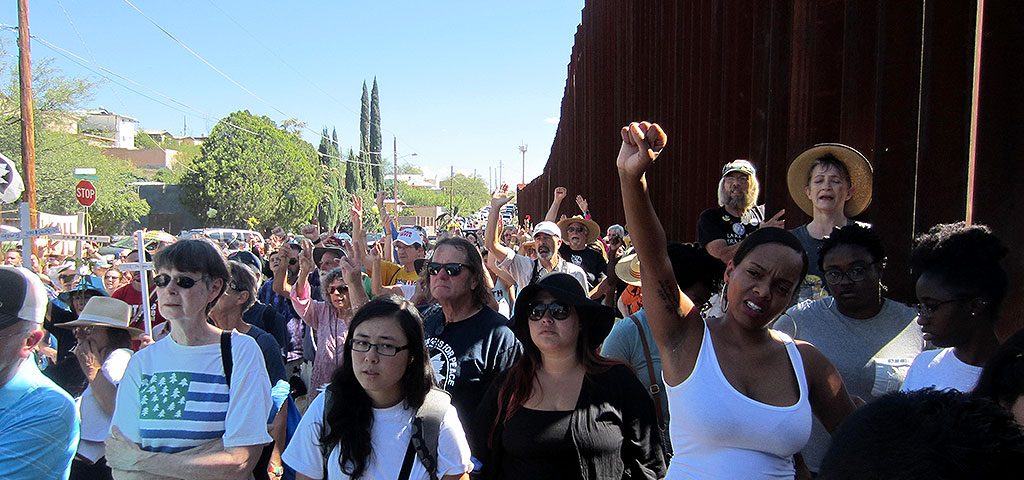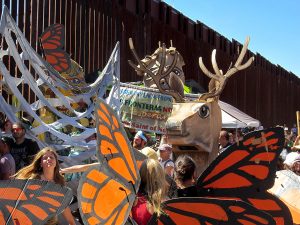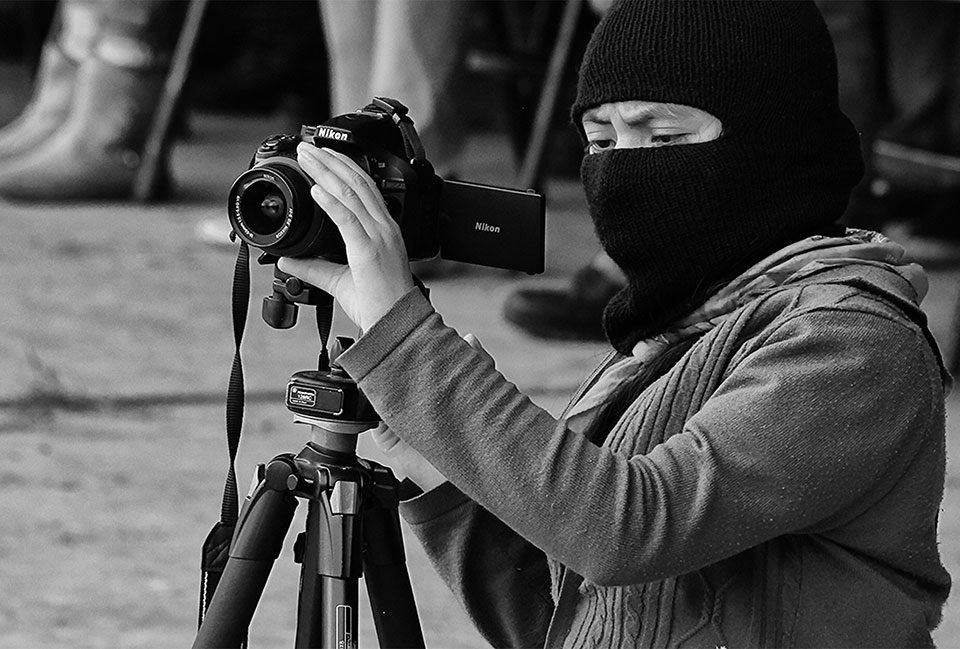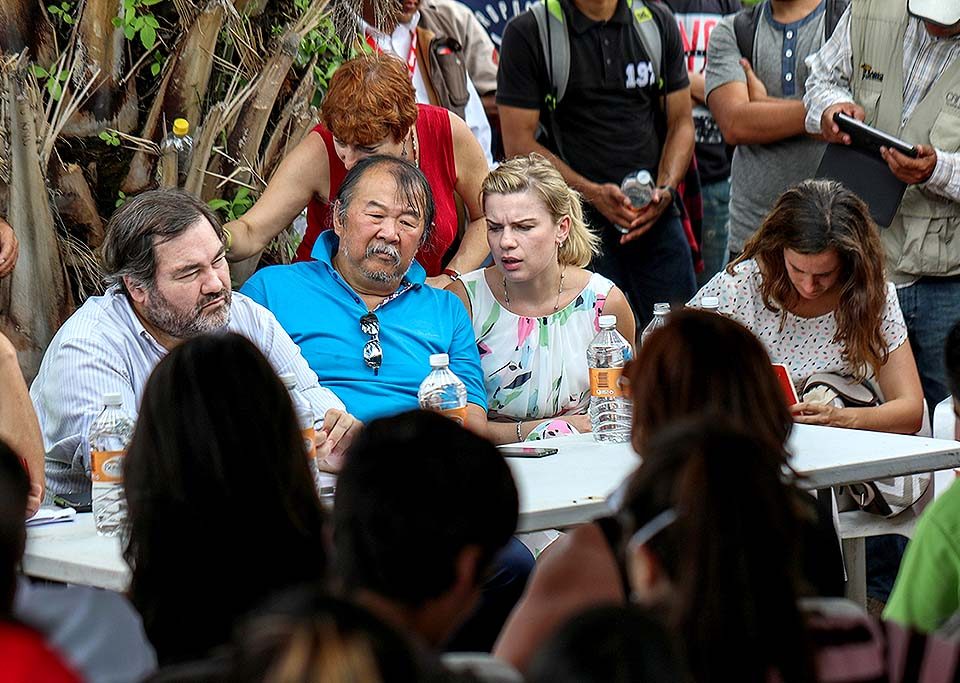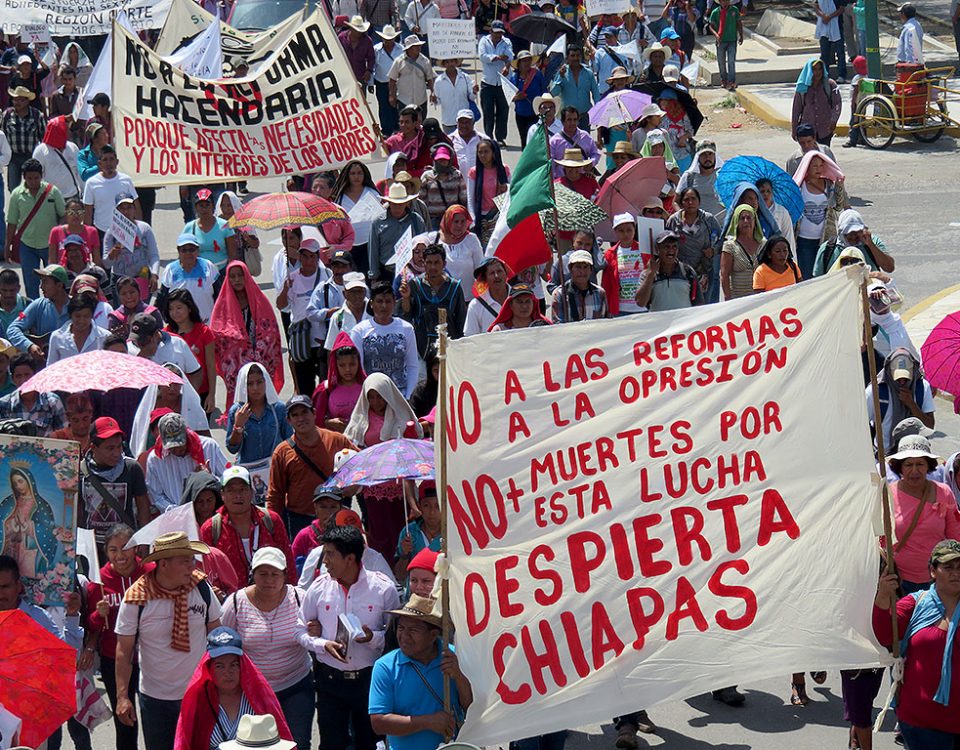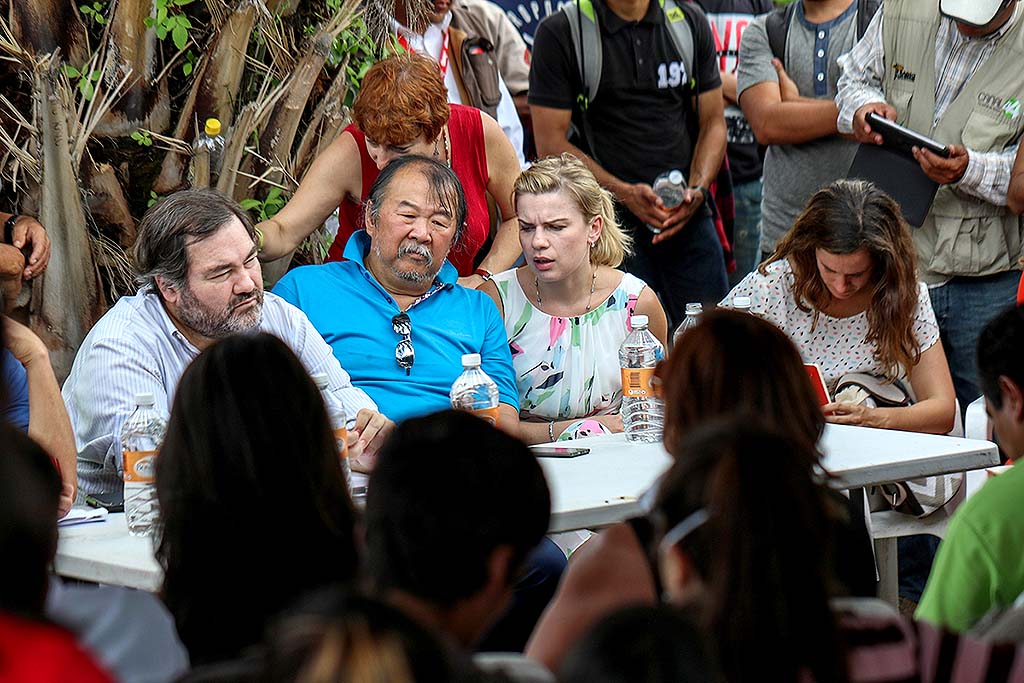
IN FOCUS: Companies, Government and Human Rights in Mexico – Between Business and Dispossession
09/01/2017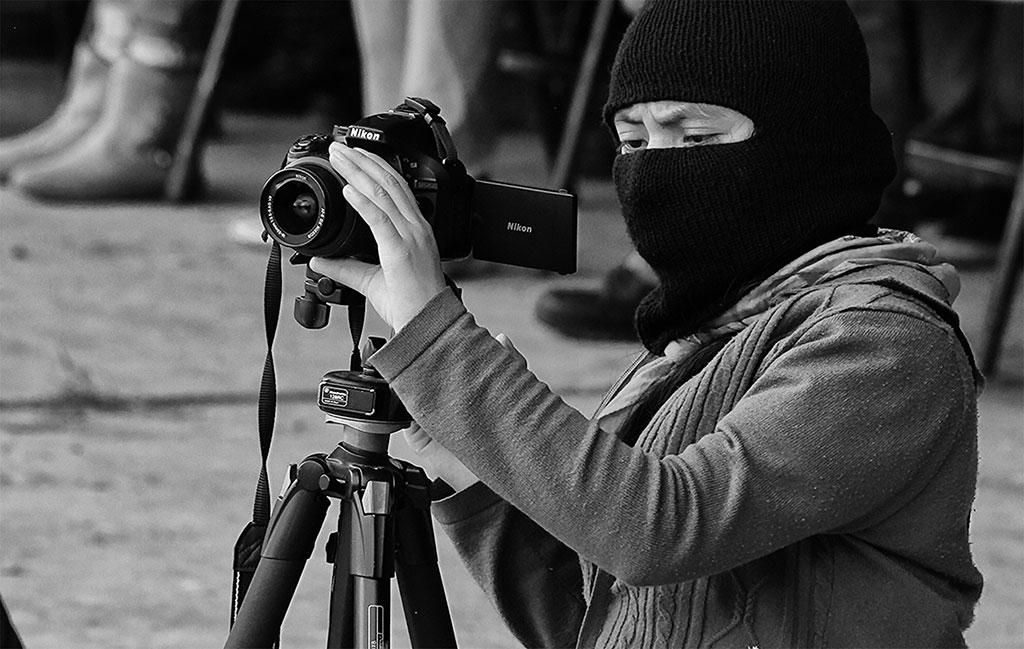
SIPAZ ACTIVITIES (From the beginning of July to the end of October 2016)
09/01/2017In October, SIPAZ had the privilege of traveling to the northern border (Mexico / United States) to participate in a binational Convergence and a tour where we had the opportunity to give presentations about the current socio-political context in southern Mexico, and had meetings with social actors, collectives, networks and human rights organizations in the states of Arizona, Michigan, Chicago, the District of Colombia, and Texas.
“Voyager, there are no bridges, one builds them as one walks.”
The night in the desert was cool and dark on October 7th, when the Convergence on the Border began, a call from School of the Americas Watch (SOAW). Hundreds of people, migrants and those in solidarity/sympathizers, concentrated in front of the Eloy Migrant Detention Center (Eloy) singing and shouting with their megaphones “YOU ARE NOT ALONE, YOU ARE NOT ALONE!”, running the risk of being arrested for taking part in an act of civil disobedience. From inside, the detained immigrants responded by turning their dormitory lights on and off. Although the immigration agents ordered the lights to be switched off throughout the Center, they could not prevent immigrants from continuing to participate from the windows by raising and lowering their t-shirts, communicating however they could.
This was the beginning of the convergence where, from October 7th to 10th, thousands of activists and organizations gathered on the southern border of Arizona (USA) and northern Sonora (Mexico), to “transcend the border” and denounce US foreign policy “as one of the main causes of migration in Latin America.”
In the desert heat, shoulder to shoulder, mourning and rage united to build collective spaces with undocumented communities, demand the end of the militarization of borders, and “the dismantling of racist and sexist systems that rob, criminalize, and kill immigrants, refugees, indigenous peoples, transgender and non/unconventional gender folks communities of color, and others throughout the hemisphere.”” There are 626 miles of border that combine the dryness of the Arizona desert and the extremely high temperatures of Sonora. An environment that is risky even for experienced hikers, equipped with water, food and several layers of clothing, and often deadly for most immigrants crossing the border without these minimum safeguards. According to the New York Times, there have been “more than 2,100 immigrant deaths since 2001.”
On May 13th, 2015, José de Jesús Deniz Sahagun celebrated his 31st birthday with his family at his home in Jalisco, Mexico. It was a day of celebration, but also a farewell because the next day he traveled to the USA-Mexico border, which he would try to cross to reunite with his three children in Las Vegas, Nevada. Seven days later, on May 20th, José died in Eloy, Arizona, in the Eloy detention Center, after approaching immigration agents, unable to continue his journey. His death was identified as suicide because in the medical examination a thick sock was found lodged deep in his throat.
In the past 13 years, 160 immigrants have died in the custody of the United States Immigration and Customs Enforcement (ICE), the federal agency that detains and deports people without legal status in the United States. Of the seven cases of suicide of people detained by ICE since 2005, five happened in Eloy, which caught the attention of immigrant rights activists. The report Fatal Negligence: How ICE Ignores Deaths in Detention, done in collaboration by the American Civil Liberties Union (ACLU), Detention Watch Network and the National Immigrant Justice Center, found that, between 2010 and 2013, eight people died due to the lack of adequate medical care while in detention centers operated by ICE. In addition, the report notes that ICE did not meet the agency’s own medical standards,“contributing factors to these deaths.”
The Eloy Center houses about 1,600 immigrants, and like many detention centers, is owned and operated by the Corrections Corporation of America (CCA), one of the country’s largest private prisons. Although ICE’s facilities maintain a jail format, people are not being held there for criminal proceedings. Despite the fact that there are detainees with a criminal record, many, like José, simply wait to be deported or simply to have their case heard in an immigration court. ACLU reports that the USA has the capacity to maintain 34,000 people in civilian prisons at any given time in more than 200 facilities (including county jails, private detention centers, and federal prisons).
Faced with this reality, organizations, grassroots groups, and SOAW create bridges on both sides of the border, to continue building processes with the undocumented immigrant community in the USA.
A little more than four weeks after the Convergence, Donald Trump, businessman, television personality, and Republican presidential candidate, was elected president of the USA for the 2016-2020 term. Trump has said that under his mandate a wall will be built along the USA-Mexico border that “Mexico will finance“. He has proposed the massive deportations of all undocumented migrants and blocking remittances derived from “illegal salaries”. With doubts about what can be expected in Mexico and Latin America under Trump’s presidency, the Convergence stated that ”while politicians build walls, we must build bridges” and assured that “we are here and we will stay!”

